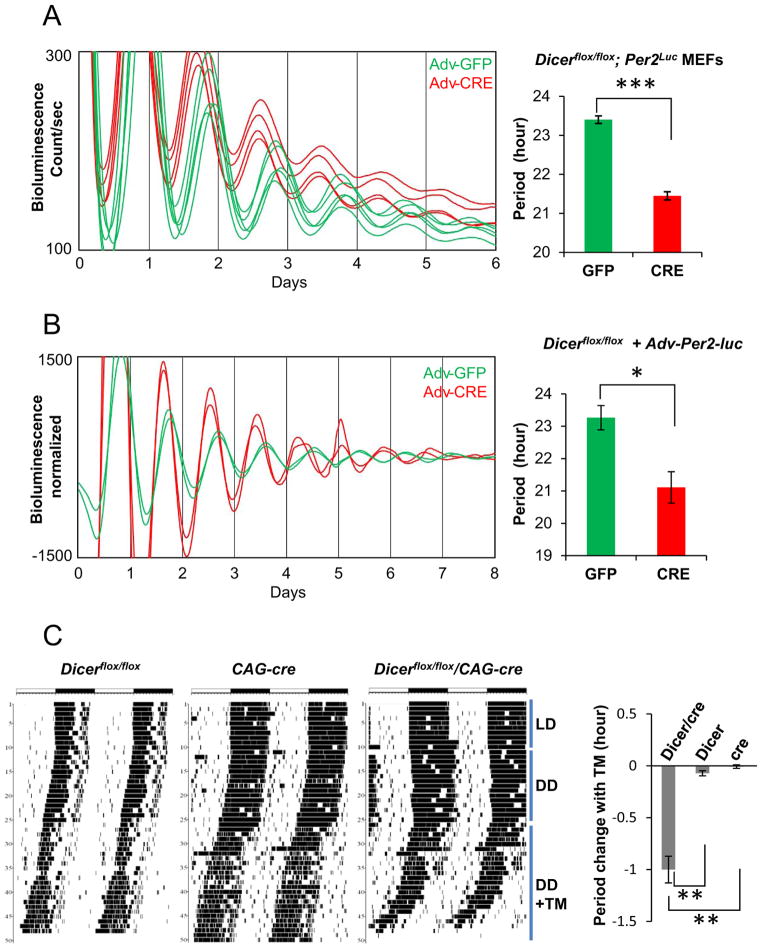Fig 2.
Circadian period is dramatically shortened in Dicer-deficient cells and mice. (A) The period of bioluminescence rhythms in CRE-expressing (Adv-CRE) Dicerflox/flox;mPer2Luc MEFs is shorter than that in control cells expressing GFP (Adv-GFP). Note that the basal lines are higher in CRE-MEFs than in GFP-MEFs. Quantitation of circadian period is shown in the graph. Mean+/−SEM; n=14 for each sample; p<0.001. See also Fig S1B and S1C. (B) Period is similarly shortened in Adv-CRE Dicerflox/flox MEFs without Per2Luc. Bioluminescence was produced from an exogenous Per2 promoter-driven luciferase reporter introduced into the MEFs using the adenoviral vector (Adv-Per2-Luc). Mean+/−SEM; n=5 for GFP, n=3 for CRE; p<0.05. (C) Period is also shortened in whole mice when Dicer is deleted using tamoxifen-dependent activation of CRE. Representative double-plotted actograms are shown for three different genotypes: Dicerflox/flox, CAG-cre-Esr1 and Dicerflox/flox/CAG-cre-Esr1 mice (n=5 each). Black markings indicate wheel running, and recordings from consecutive days are stacked in rows. Mice were entrained in a 12:12 LD cycle (12 hrs light and 12 hrs dark) for 2 weeks followed by 2 weeks in constant darkness (DD). On the 15th day, the food was switched to tamoxifen (TM)-containing food at 0.4mg/g food. All Dicerflox/CAG-cre-Esr1 mice were found dead at the end of the recording. In these Dicer-deficient mice, the period was ~1 hr shorter in the last 7 days before death when compared to the period in DD before tamoxifen treatment. However, there was no significant difference in period before and after tamoxifen treatment in control (Dicerflox/flox or CAG-cre-Esr1) mice. See also Fig S2.

